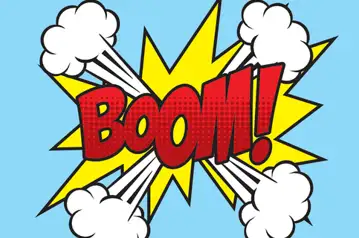- The Reserve Bank delivered on expectations and delivered a 25bps cut. The cash rate ends the year at 2.25%. And potentially ends the easing cycle there too.
- Will more stimulus be delivered in 2026? The RBNZ maintains some optionality. 2.25% may be the bottom. But the track signals that the next move is still more likely down than up.
- The clients we speak to are sick of hearing about “greenshoots”… they want activity. And we simply haven’t seen enough of it yet. We expect (hope) the RBNZ has done enough to see a material lift in activity next year. Finally, we may be in full-blown recovery mode.
For the ninth time this cycle, the RBNZ cut the cash rate by 25bps to 2.25% - the lowest in 3 ½ years. The move was expected. The RBNZ’s tone and new track, not so much.
Today’s decision, with a vote against and OCR track with a 2.20% terminal rate, signalled a bank close to the bottom. Just as a diver slows down as they approach the sea floor, in murky water, the RBNZ MPC members have their hands out, feeling around. If 2.25% is the bottom, and we think it is, that’s good news. Market rates reflect this, and we may see a spike in mortgage (re)fixing into next year.

The reaction in financial markets hardly surprised. The Kiwi currency popped higher as the statement was deemed “hawkish” to market expectations. But geez, it wasn’t by much. The RBNZ’s OCR trajectory was ever-so-slightly above market pricing (as seen in the OIS strip). A low of 2.20% published by the RBNZ, was above the 2.15% priced in the market. We’re not talking about a lot at all. And the lift in interest rates after the policy announcement reflected this. It was a 5bp difference, and swap rates rose by a little more than 5bps (give and/or take).

We still (as the RBNZ) maintain some optionality, with the risk titled towards more cuts (not hikes) near term. We said before the statement that there’s a 50/50 chance of another move in February. The RBNZ sees a reduced risk. We maintain this risk is close to 50/50, and we need to see how the economy develops over summer. So enjoy the break, and let’s get back to it in February.
The worst is behind us
The Kiwi economy is still operating with a significant degree of slack. The output gap – the difference between actual output and potential output – was modelled to be slightly more negative than in August. Global risks led to more precautionary behaviour by businesses and households. And the lack of a wealth effect, as house prices moved sideways, weighed on consumption.
All in all, the expected recovery in economic activity is forecast to be slower than projected in the August MPS. The RBNZ now projects the NZ economy to grow just 0.2% this year – well below trend. But from here, the output gap is expected to narrow, helped by elevated export prices and the reductions in interest rates. The emergence of greenshoots promises a better year of growth in 2026.

With greater than expected slack in the economy, the domestic inflation track was pulled lower. But offsetting that downgrade is the recent depreciation in the NZ exchange rate. A weaker currency adds upside risk to imported inflation, with the tradables track revised higher. Putting together both components, forecasts for headline inflation are largely unchanged, and expected to return to the midpoint by mid-2026.
With ongoing spare capacity, the unemployment track was also lifted slightly higher. The labour market is expected to remain softer than previously thought over the medium-term. The RBNZ’s forecast for the peak in the unemployment rate remains at 5.3% for a little while longer. It's not until the middle of next year that the unemployment rate males it’s way south – six months later than previously forecast. Also symptomatic of a weaker labour market was the downgrade in the RBNZ’s wage inflation forecasts.
Special topic: The two-speed economy continues
A special topic touched on by the RBNZ in their November MPS was on the impact of high commodity prices on the Kiwi economy. A mixture of global supply constraints and strong demand has supported a number of Kiwi exports like meat and dairy. Add to that a lower exchange rate, and exporter earnings have taken off. It’s what’s driven the two-speed economy of 2025. And where the “green shoots” we’ve seen have largely been concentrated. Meanwhile, sectors reliant on the domestic economy like construction and retail have remained weak. Our regional map is an exact reflection of this.

It’s great that our Kiwi exporters are doing well after some challenging years. But even now with higher export earnings we’re not seeing the lift in activity spread into the broader economy. Spending and investment from farmers remain muted with a clear preference of paying down debt playing out. The steep fall in the share of non-performing agri loans reflects as such.

We discussed this in our recent episode with our Kiwibank Treasurer Belinda Newman (check it out). The RBNZ appear confident that the ongoing pass through of lower interest rates will lift activity in the domestic economy into next year and activity spreads beyond our rural hubs. We hope it does, but in a scenario where this doesn’t eventuate, a cash rate below 2.25% may be needed. And the Reserve Bank have still positioned themselves with optionality to respond to any developments over the summer period.
RBNZ statement
“Annual consumers price inflation increased to 3 percent in the September quarter. However, with spare capacity in the economy, inflation is expected to fall to around 2 percent by mid-2026.
Economic activity was weak over mid-2025 but is picking up. Lower interest rates are encouraging household spending, and the labour market is stabilising. The exchange rate has fallen, supporting exporters’ incomes.
Global economic growth has benefited from strong AI-related investment but is expected to slow in 2026 as trade barriers weigh on activity.
Risks to the inflation outlook are balanced. Greater caution on the part of households and businesses could slow the pace of New Zealand’s economic recovery. Alternatively, the recovery could be faster and stronger than expected if domestic demand proves more responsive to lower interest rates.
The Committee voted to reduce the OCR by 25 basis points to 2.25 percent. Future moves in the OCR will depend on how the outlook for medium-term inflation and the economy evolve.”
All content is general commentary, research and information only and isn’t financial or investment advice. This information doesn’t take into account your objectives, financial situation or needs, and its contents shouldn’t be relied on or used as a basis for entering into any products described in it. The views expressed are those of the authors and are based on information reasonably believed but not warranted to be or remain correct. Any views or information, while given in good faith, aren’t necessarily the views of Kiwibank Limited and are given with an express disclaimer of responsibility. Except where contrary to law, Kiwibank and its related entities aren’t liable for the information and no right of action shall arise or can be taken against any of the authors, Kiwibank Limited or its employees either directly or indirectly as a result of any views expressed from this information.




